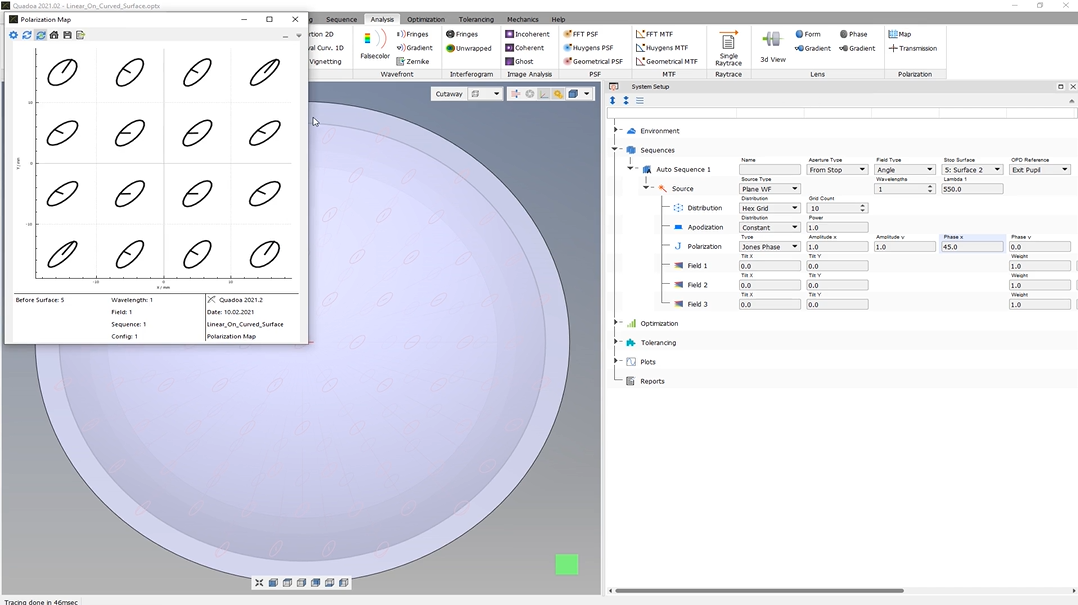Polarized Light Source
Learn how to define the polarization characteristics of the source.
Transcription:
In this video, I will show you how we can set up different polarizations for the light source.
The model I’ve opened here is the model with the name linear on curved surface, and you can find it also in the example folder.
To set up a polarization for the source, we have to switch here to the system setup.
And in the system setup, under the item source, we will find here this polarization item.
And when we open here this drop down menu, we will see different polarization types as linear, circular, Jones complex, or Jones face.
And when we select, for example, here this linear polarization, we can see that here in our three d view, the polarization has been drawn in.
And here we can further define the angle of the polarization plane. So we can change it, for example, to forty five degrees, and now we see that here also the polarization plane in the three d view has changed.
We can also switch here, for example, to a circular polarization.
Now we see that here also in the three d view the polarization has changed to circular.
For elliptic polarization, we also have here this Jones complex setting with the real and the imaginary part of x and y, and also here the Jones phase with amplitude of x and y and also the phase of x and y.
So we can here just just to show you.
And now we have here this elliptic polarization.
We can also open a polarization map to visualize the polarization, and for that we have to switch here to the analysis tab.
And here on the right side, we can find here this polarization map. And when we open this polarization map, we can see here this polarization plot.
And here under the settings menu, we can further define the settings. For example, we can increase the sampling.
And here we can select whether the, polarization should be plotted before or after the interaction with the surface.
And we can also click here on the show arrow, checkbox, and now here, the direction of the polarization is shown with here the small arrow.
Yeah. Thank you for watching.
